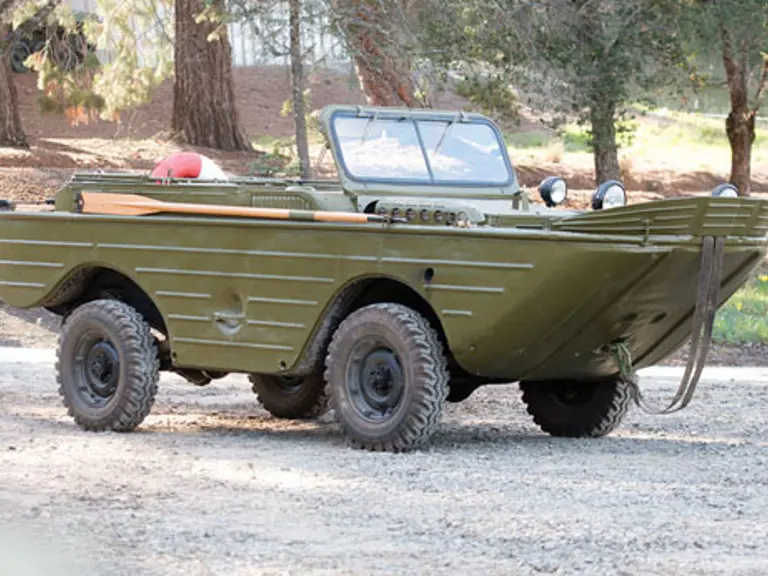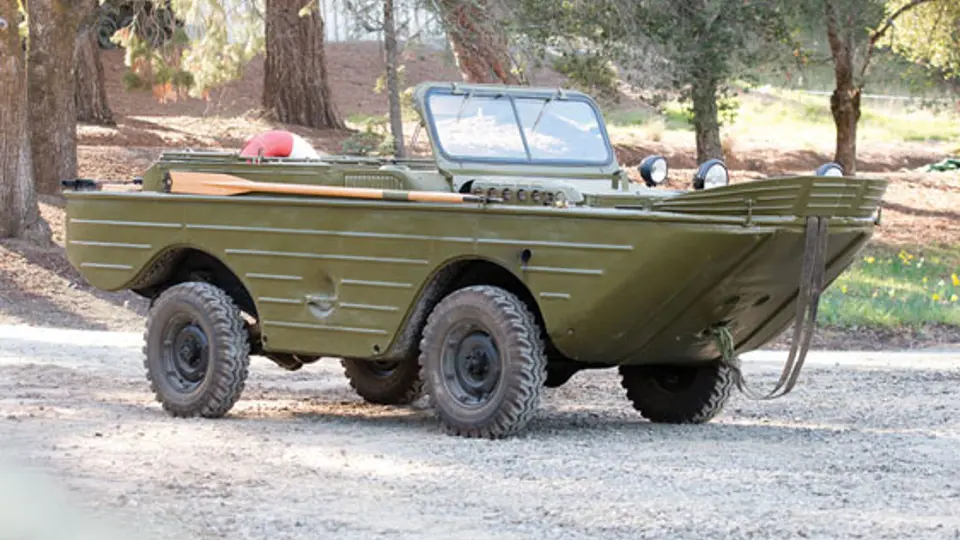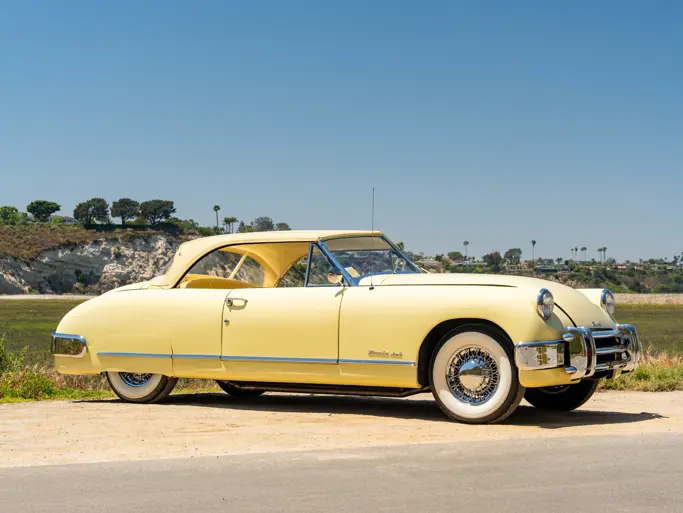 | Portola Valley, California
| Portola Valley, California
Weight: 2.7-tons (2,480-kg)
Length: 16' 5” (5.07-m)
Width: 5' 8” (1.73-m)
Height: 5' 10”(1.79-m)
Crew: 4
Armor:
None
Weapons:
-Primary
None
-Ammunition
None
Engine: GAZ-M20 Pobeda 4-cylinder gasoline engine, 55-hp
Power/weight: 20.3-hp/ton
Fuel Capacity: Unknown
Range: Unknown
Speed: 56-mph (90-km/h) on land
5.6-mph (9-km/h) in water
The vehicle being offered, MAV (GAZ-46), was tuned up in December 2013/January 2014 and successfully test driven in January 2014, though the brakes are not functional. It has original data and instruction plates along with original instrument gauges. It also includes accessories such as a flotation ring and oars. Nothing is known about its service history or when it was built.
Prior to the start of World War II, the U.S. Motor Transport Board put forth the requirement for a 1/4-ton light amphibious truck. Competition for the contracts was between several companies, including Ford Motor Company who ultimately won out. Their vehicle, know as the Ford GPA was based on the ubiquitous Jeep. Production began in 1942 with over 12,000 being by before production ended in March 1943. The vehicle was not very popular with U.S. forces and most of them were diverted via Lend-Lease to the Soviet Union. Others went to the UK, France and Canada.
In Soviet hands, the vehicle was extremely popular. It was issued to reconnaissance units who used them to traverse the many swamps and marshes of Eastern Europe. After the war, a plan was put into place to produce a domestic version. Based on the GAZ-69 Russian jeep, the GAZ-46 went into production sometime in 1952. The GAZ-46 was given the military designation of “Malyj Avtomobil' Vodoplavayuschij or “Small Amphibious Vehicle”. Production of the MAV (GAZ-46) ended in 1958.
Transport Cost to Storage: $660





